What I realized from reflecting on my snake dreams was that perhaps the possible existence of snakes in the woods was part of what makes the Guilford College Woods able to function as a refuge. After all, refuges are not singularly for human beings; “wildlife refuge” is a very common phrase to hear in conservation circles. Often, being the bird lover I am, I think of places in terms of the birds that live there. The lake that sits at the entrance of the Woods is populated by a single Muscovy duck (once half of a pair, the other having been relocated) and a flock of Canada geese. I love geese, and have ever since I watched Fly Away Home in a dark classroom in middle school; Mary Chapin Carpenter’s version of 10,000 Miles is still nearly enough to bring me to tears. I remember times spent by the lake this year, as midterms and now finals ravaged my first year of college more than I ever expected, little spots of brightness emerging as I close my eyes and picture my friend Marshall tossing okra anxiously at the muscovy hovering nearby, or I remember sitting on the bench in the Woods, staring up at the Carolina wrens and chickadees perched in the beech branches while Ty told me about the mockingbirds that lived (and cried out, frequently) in her neighborhood’s trees. I think of those moments and realize that while my solitary time spent encircled by geese was lovely, the Woods were much sweeter when I experienced them with my friends. Recently, I complained to the aforementioned Ty and Marshall about how someone had removed the plank from the swing tree’s rope. Although it filled me with adrenaline fueled by my fear of heights, I loved the swing tree and was deeply hurt by the petty theft laid against it. So we ventured out to try and repair it, Ty’s phone blaring Nicki Minaj hits in the near-sunset. I led us the wrong way at first, and had to backtrack to the fork and correct our trajectory. We arrived at the swing tree, adorned with carvings of names and symbols, most notably one that said “DAVE N TRACY FRIENDS ‘84”. I was reminded of my first encounter with this carving, on a walk into the woods alone in late February. I almost always went to the lake and the woods by myself, feeling afraid of seeing other people, or even worse having them see me. I never really felt I belonged, always seeming to creep among the trees like a trespasser, an outsider. I remember hoping that one day I could overcome that fear, not have to run away from the geese and back to Milner every time someone approached the lake, my skin itching and feeling sick all over from having someone else see me and still be willing to approach. But even as we failed to repair the swing, the black rope hanging empty like a noose near the ground, I still felt a kind of comfort and belonging that I hadn’t ever really felt when I was by myself.
Month: March 2021
The Refuge of Community
There was a sense of disappointment at the loss of the swing, but it was getting dark out anyways, and I think the three of us were just happy to have gone on a very-mini hike together. And so we trudged back to the lake, a couple other people hanging around the benches, and sat on the little brick wall facing the fire pit, sadly filled with beer bottles and other little bits of trash. Ty’s phone still blaring music, we sat in the nice early-spring breeze and watched as several nycticeius humeralis, Evening bats, swooped around in search of bugs to eat. In that moment, I realized that the refuge offered by the Guilford College Woods was not only for virtue of its ability to grant physical freedom or escape, but was also found in the thread of love that tied all of us together. The Woods are important to me and almost everyone at Guilford now, just as they were important to indigenous people who lived in Greensboro long before it had such a name, to Levi Coffin and Vina Curry, to Dave and Tracy in 1984 and to decades worth of Guilfordians whose names I will likely never know. But despite the fact that I will never know them and they will never know me or my friends, we are connected through the woods. It’s a beautiful thing to imagine that long line of people, our community growing alongside the old growth forest, imagining how many people the Tulip Poplar had met alone. And even if it sounds like a cliche New Age attempt to seem “spiritual,” I can feel their energy all around me as I walk through the woods. I gaze at the carved bark on the trees and I feel them calling out to me, crying to be remembered. To be understood, to be loved. I feel the same desires inside me, and I wonder what monuments I will leave that will convey those feelings to the ones who come after me. But most importantly, as I feel the weight of all of that love, fear, and hope, I am comforted by the knowledge that I will never have to carry it alone. As I sit shoulder to shoulder between Ty and Marshall, watching the Evening bats make close-call divebombs above our heads, I realize that the true refuge the woods offers is the chance to be in a community so deeply and lovingly connected that it doesn’t require words. No collection of aspirated phonetics could ever speak as loudly as Nature did to me when I gazed across the woods in a haze and made eye contact with a doe much closer than I expected. The kind of intentional quiet I assumed in that moment felt nearly Divine in its power over me. It calls to mind Quaker worship and their form of intentional silence, but I think I’d take the woods over a meetinghouse any day. Some people go to Meeting to sit quietly and wait for God to speak, I go to the woods and sit quietly in hopes a deer will emerge from the vegetation and fix its big shining eyes on me. Perhaps in the end, those two silences run together and become the same thing.
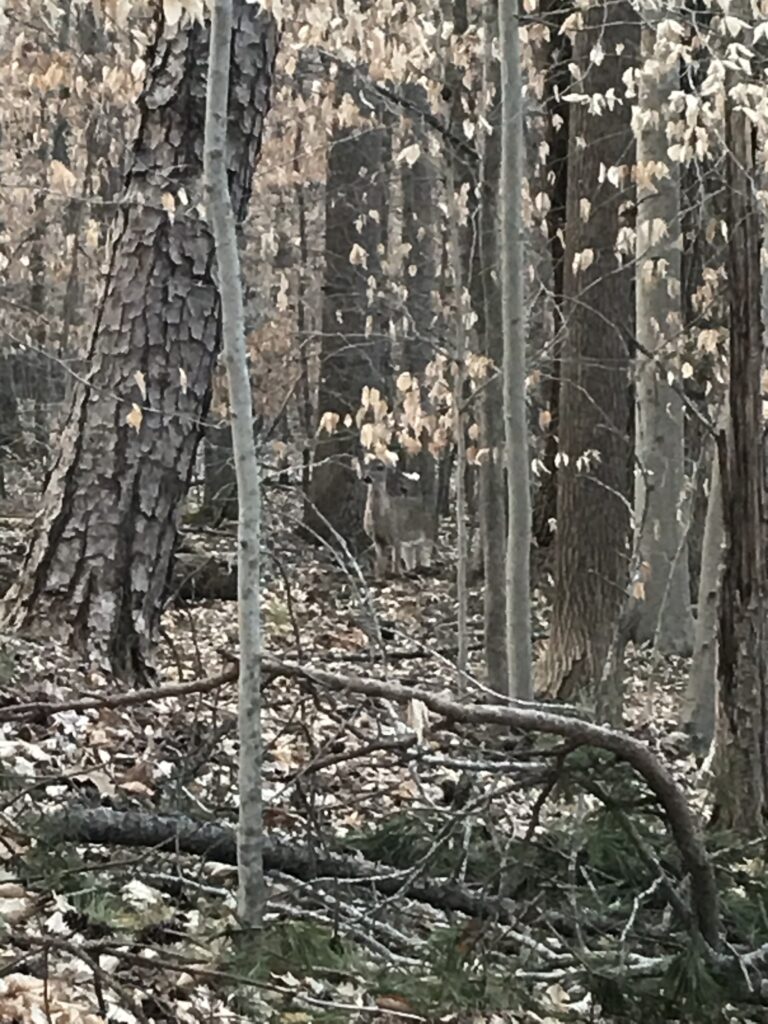
Timeless Refuge: A Brief History of the Guilford College Woods and the Tulip Poplar
The 1720s were a particularly important time for the United States, in terms of births. Roger Sherman was born in 1721, Samuel Adams the next year in 1722. John Morton, Lewis Morris, Benjamin Harrison. Signers of the Declaration of Independence, important American statesmen. But somewhere tucked into those years, a little sapling was beginning to grow. More than one hundred and ten years before Guilford College would be founded by the Religious Society of Friends, the now iconic champion tulip poplar was merely a little sprout. And it would go on to have quite the eventful adolescence. From the Revolutionary War to the Underground Railroad and the Civil War, the tulip poplar and the entirety of the Guilford College Woods have stood as silent witnesses throughout history and played an important role in these events, as well as throughout time, as a place of retreat and escape.
If you’ve never seen one, a tulip poplar seedling is quite an interesting thing to lay eyes on. It has three little green bumps at its center, like a pod of peas without the pod. Little four-pronged leaves stick out from the pod-less pea stack like arms being waved wildly or thrown open for a hug, and a host of tan roots shoots out from the bottom, calling to mind fringed bell-bottom pants. Just the look of the seedling is joyful, standing in stark contrast to the dark history witnessed by Guilford College’s champion tulip poplar. It creates a feeling much like a human life: starting out vibrant with a great zeal for life, dancing our way through childhood, only to find ourselves trudging through a violently somber young adulthood. Such an experience was shared by one Levi Coffin, whose joyful childhood was also marred by the horrific system of enslavement in the American South and North Carolina in particular, as he witnessed a group of enslaved men chained to a cart heading down the road. Levi’s father spoke to the men, who told him they had been separated from their wives and children. Levi’s life as an abolitionist took root there, just as the tulip poplar took root in what was known as the New Garden Woods years before. I imagine Levi returning to his childhood home in Greensboro, wondering deeply and silently (as Quakers are often wont to do) “[h]ow terribly we should feel if father were taken away from us” (Coffin 1880). But all was not lost for Levi, as he had the ability like many people before him to slip into the safety of the woods and escape the burdens of life. Growing up just north of the now Guilford College Woods, with his Meetinghouse on the other side of them, he described them as a “refuge”. Certainly, that is an accurate name for them in the historical sense – but also in the personal and spiritual sense.
To enslaved people on the Underground Railroad and Quakers escaping mandatory service in the Civil War, the Guilford College Woods circa 1819-1852 represented a very physical, tangible freedom. A freedom from either dehumanizing bondage and forced labor or from the horrors of unethical war. The tulip poplar is frequently described as a “silent witness” to these events, standing still and quiet as the forces of freedom and slavery, fear and hope, death and rebirth fought a bloody war tooth and nail. It is quite something to close your eyes and try to imagine the world from the perspective of the wood’s sacred champion. Imagine the gait of feet, both sneaking and perhaps running. The southern wind against the bark, carrying smell after smell to the noses of slave hounds, until a trail led across water and the scent was lost. The sound of strangled frustration, cries of jubilation, wailing of dashed hope and lost freedom.
Oh The Places You’ll Go in the Guilford Woods
The Guilford Woods is known for the many hiking trails criss-crossing its grounds like the veins under skin. Everyone says it’s not likely to lose yourself in there wandering down a path, but I say differently.
Being someone with low vision, I see the woods very differently than most do. I “see” more with my ears, nose, and sense of touch than I do with my eyes. When I use my eyes to see the woods, all I see is varying shades of browns and greens. Now, I’m not colorblind, its just that everything within a 5 foot radius is blurry to my eyes. I cannot tell the trees apart from each other using my eyes because every tree looks the same when I look at them; it’s by the feel of their trunk or leaves that I can tell Tree A from Tree B.
I can’t go in the woods alone because I have an extremely poor sense of direction. Keeping track of the forks in the paths is where I struggle most. I can certainly get myself lost in the woods, but I can sadly not rely on just myself to get me back out of the woods safely.
It is very nice to be able to go and be in a place where you are really able to let your senses run wild and not just have to rely on what your eyes can see. That is one of the best aspects of nature in my opinion.
The Woods In The Rain
Being in the Guilford College Woods after it has rained is like walking into a different world. Typical sunny colors found on the forest floor and trees are more muted. They get replaced with the eye-catching green of moss, ivy, and freshly watered mushrooms that litter the bottoms of tree trunks.
One sight that really sticks out to me when it rains in the woods is the sound of the rain hitting different objects. The drops pattering the tree leaves sound so different from the big fat drops exploding on the ground, and it is music to my ears. It’s like hearing natures symphony, and the fact that I can mess around with different objects to make the sound of the rain hitting them is also fun and cool.
That earthy smell people talk about smelling outside after there has been a good rain takes on a whole other meaning in the woods. Everything gets real damp and the forest floor gets slippery with mud. The physical attributes that fresh water gives to the living things of the woods is amazing. The trees soak up the water through the soil and their roots. The creek runs high and loud with the fresh rain water sloshing through it. You really do start to see things in nature come alive when the sky breaks open and the rain starts to fall.
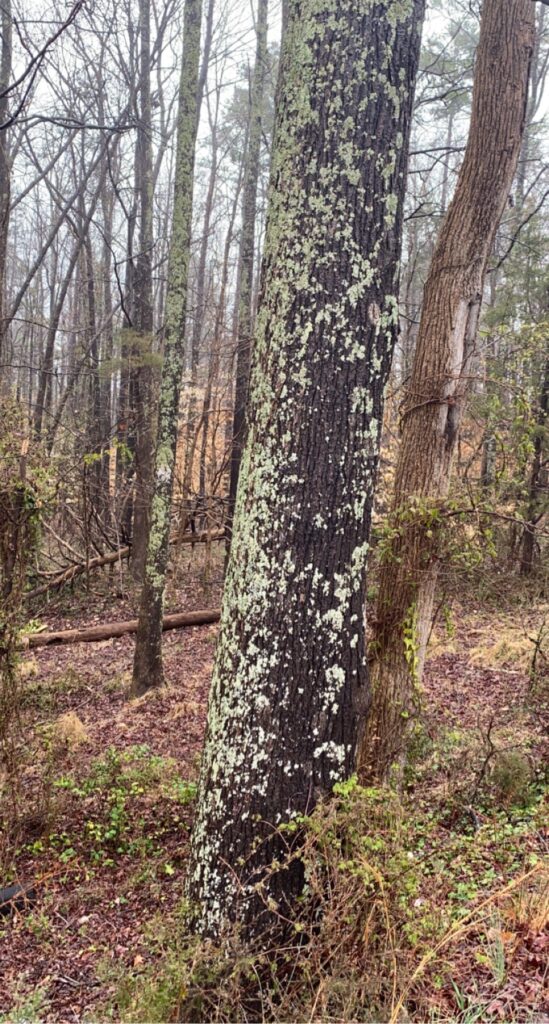
Peace in an new perspective
Being from a city on a peninsula it’s not many chances that you are able to take a walk in the woods. Although last year and this semester has been stressful. I want to show you some of the things I’ve seen while I have been on my meditation walks.
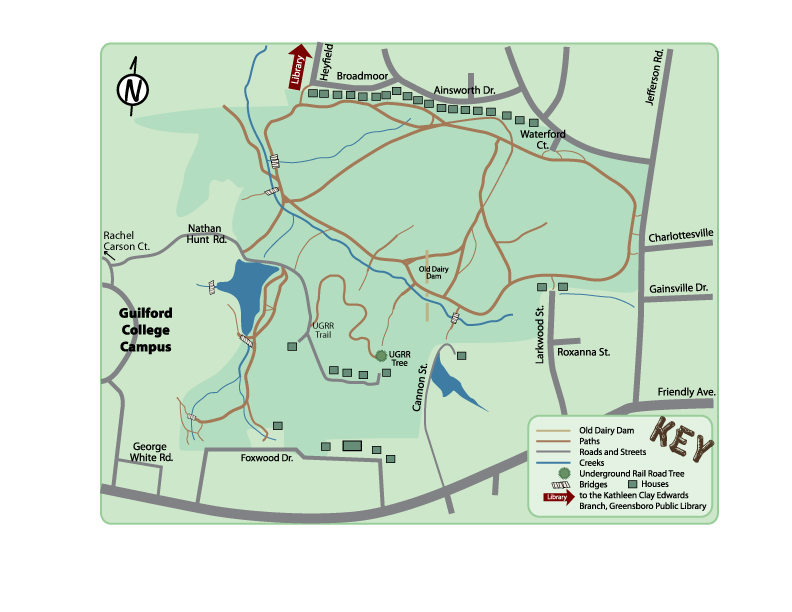
Map of the Guilford Woods 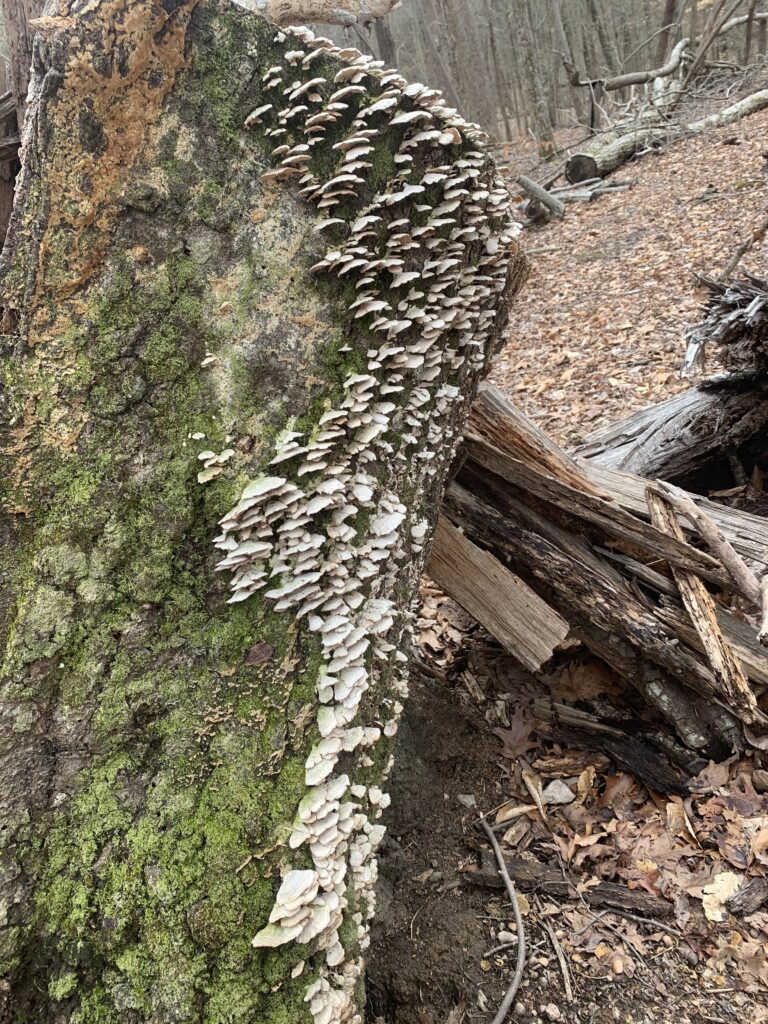




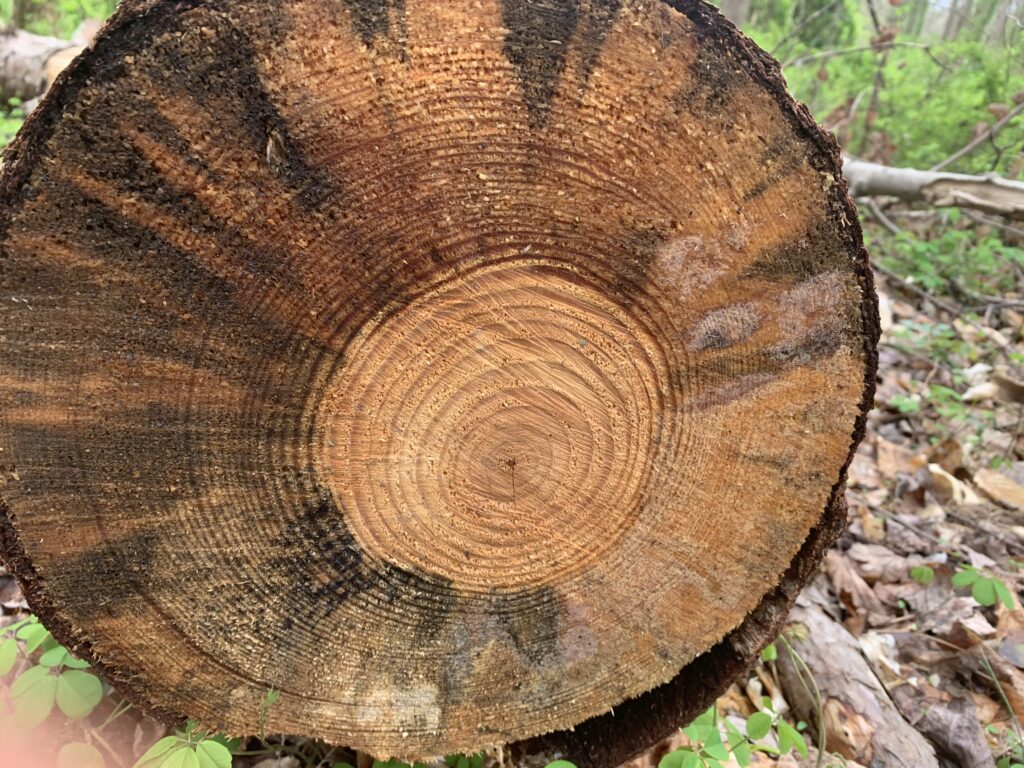

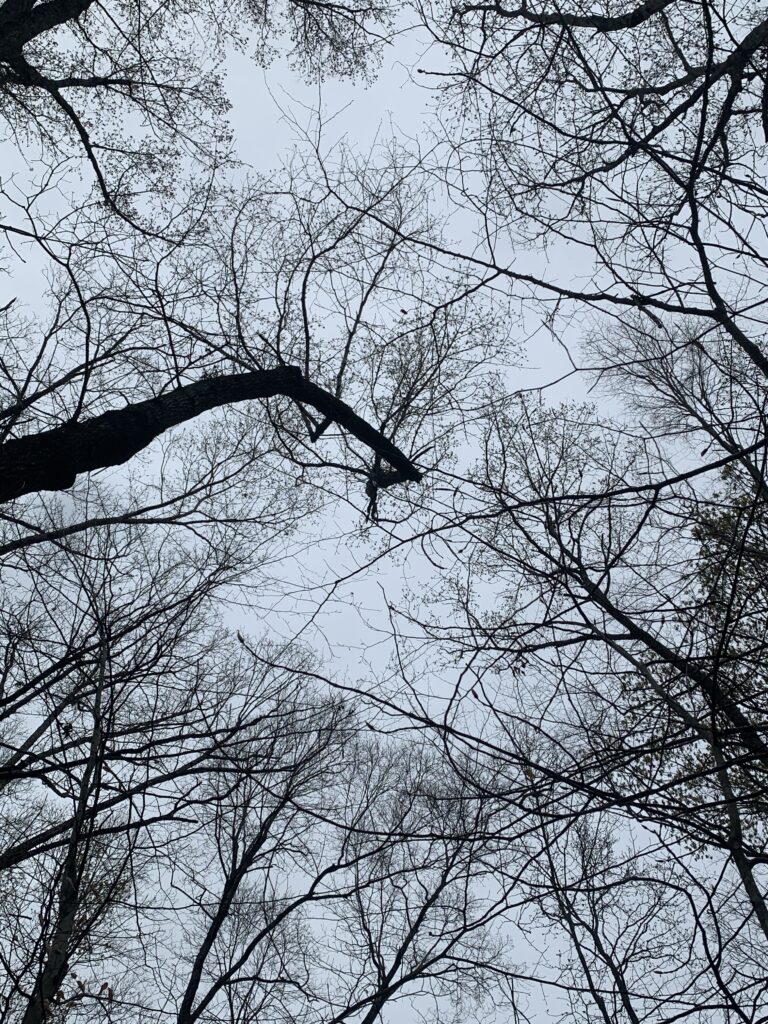

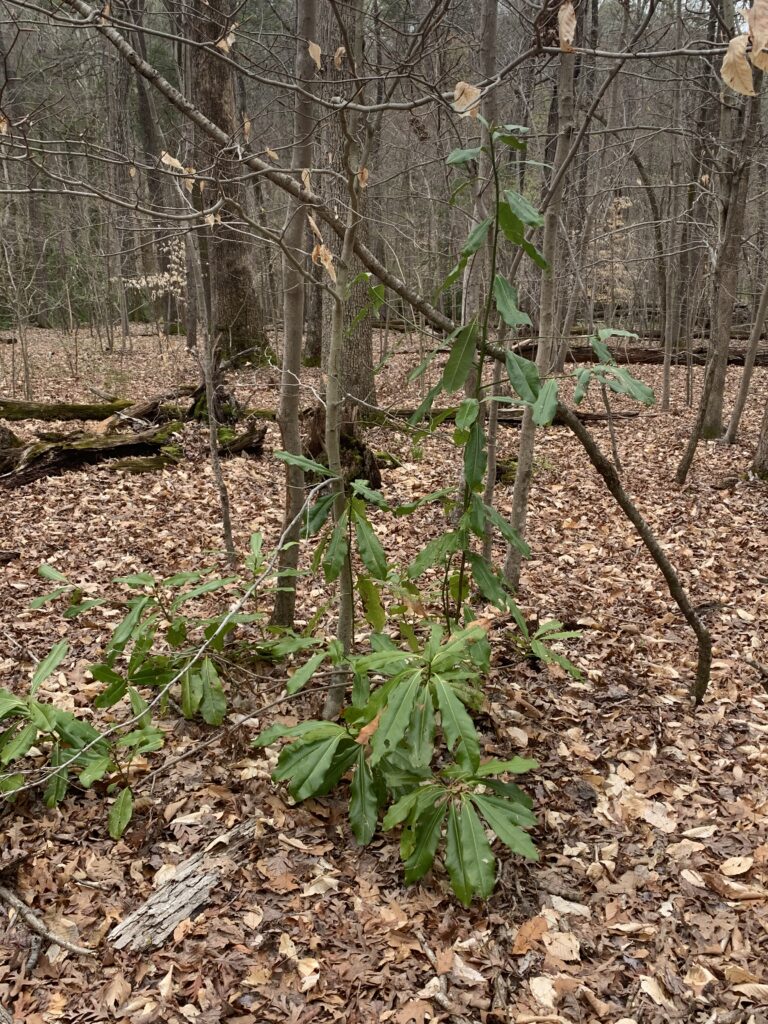
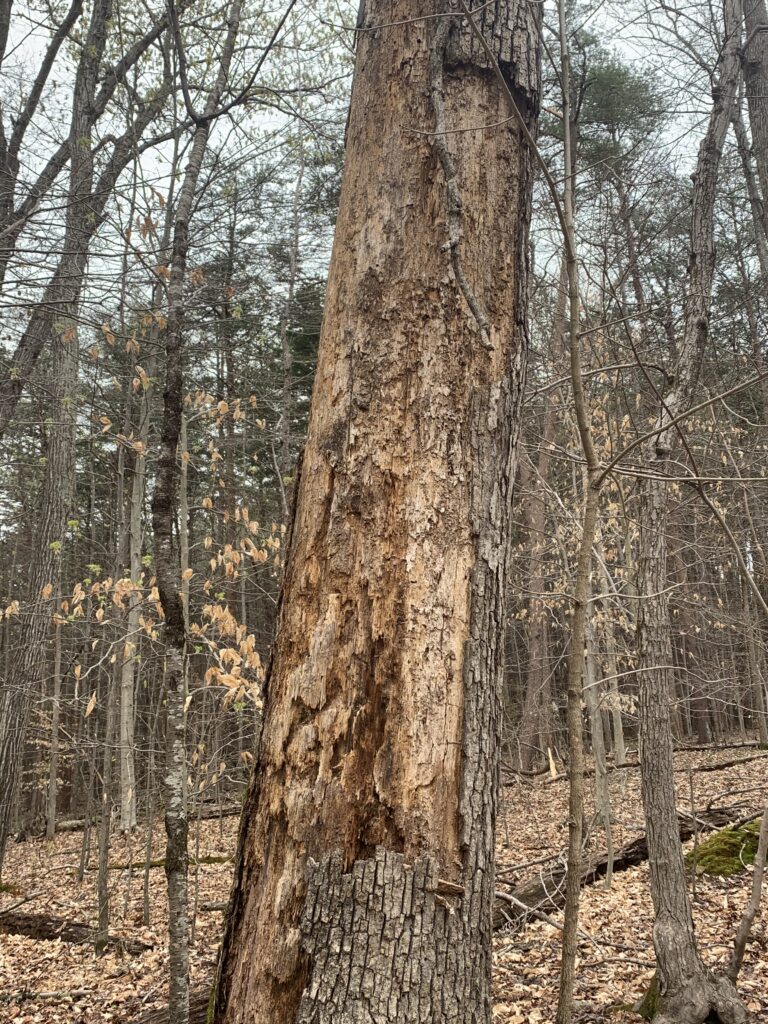


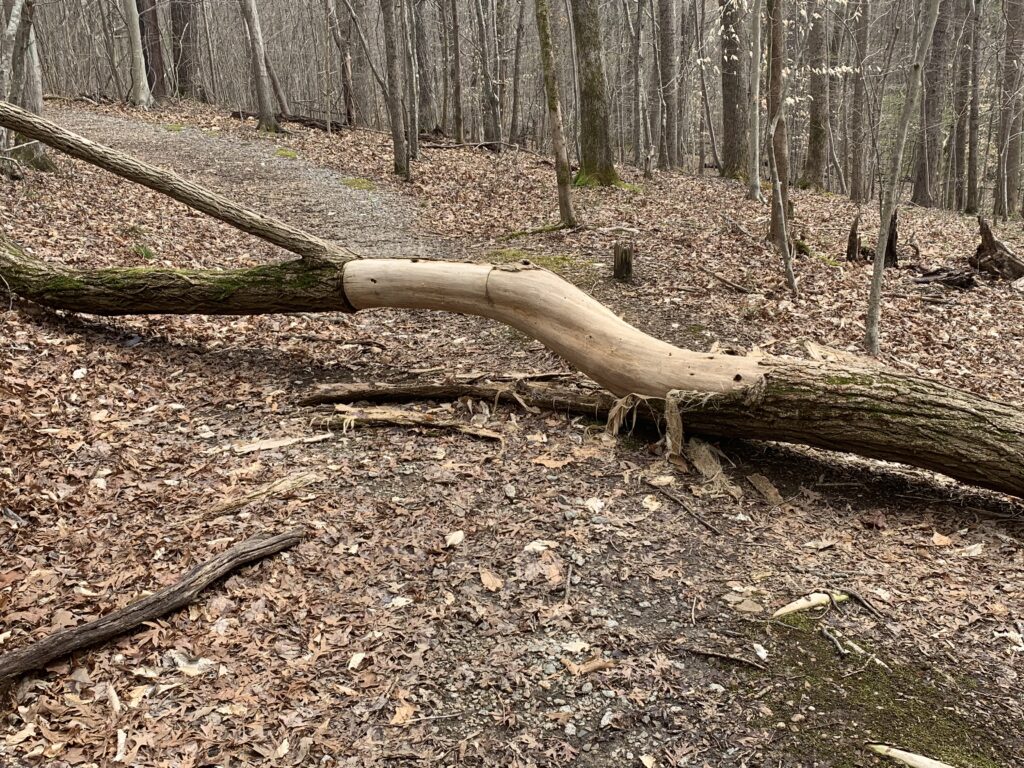



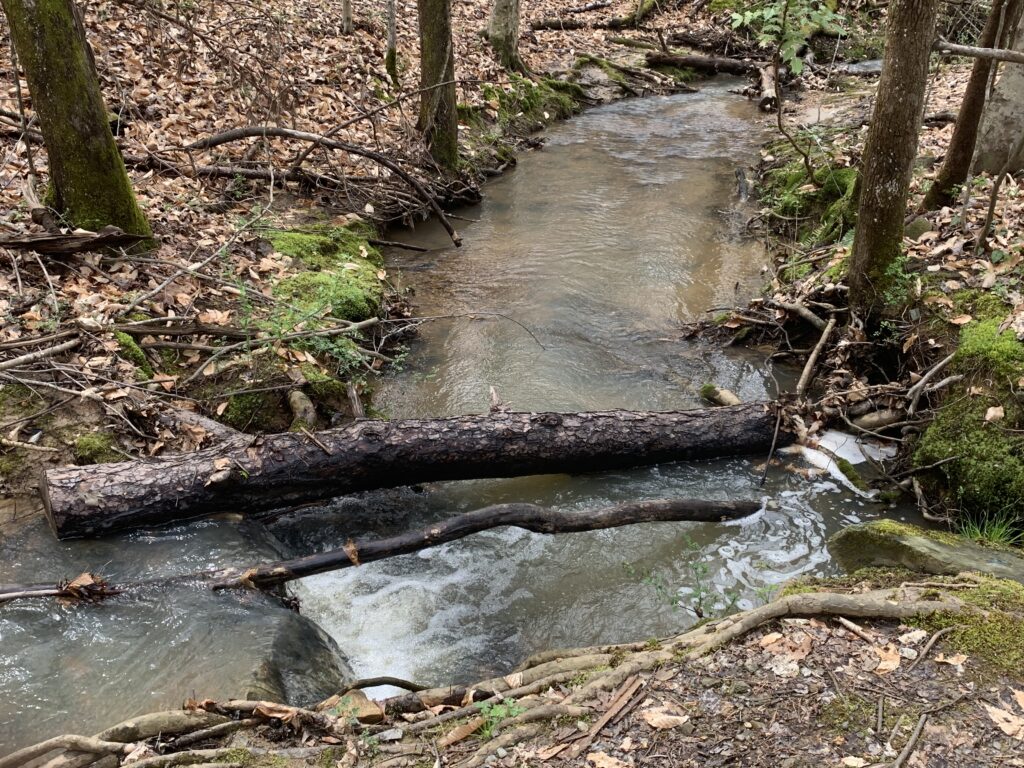
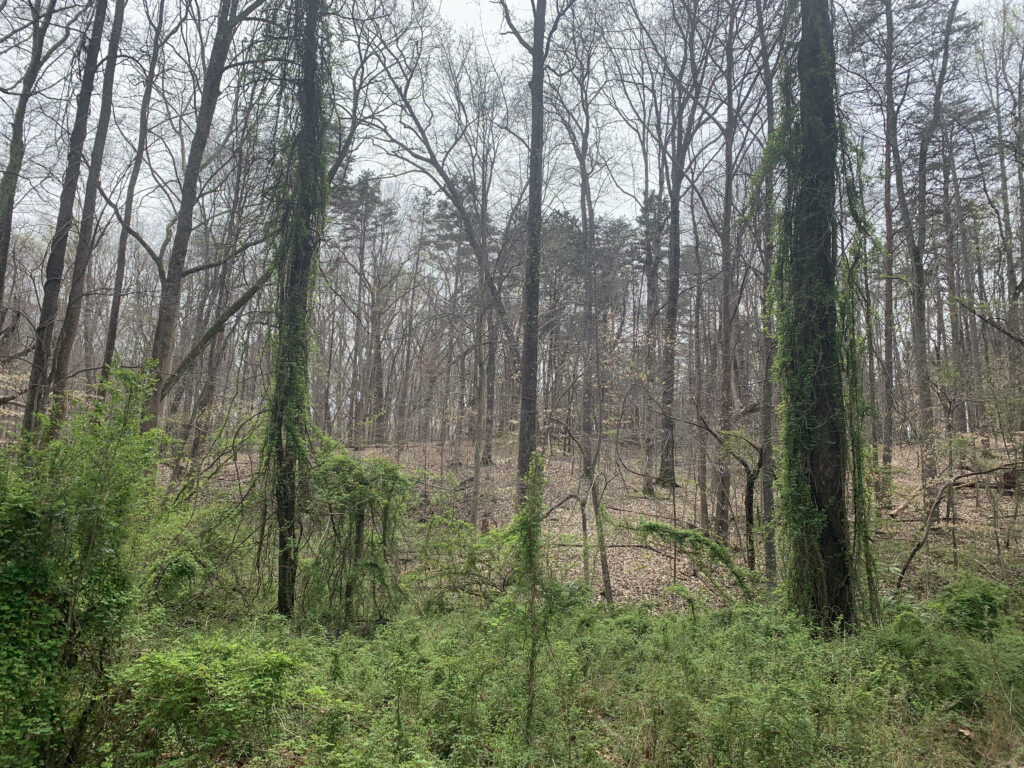
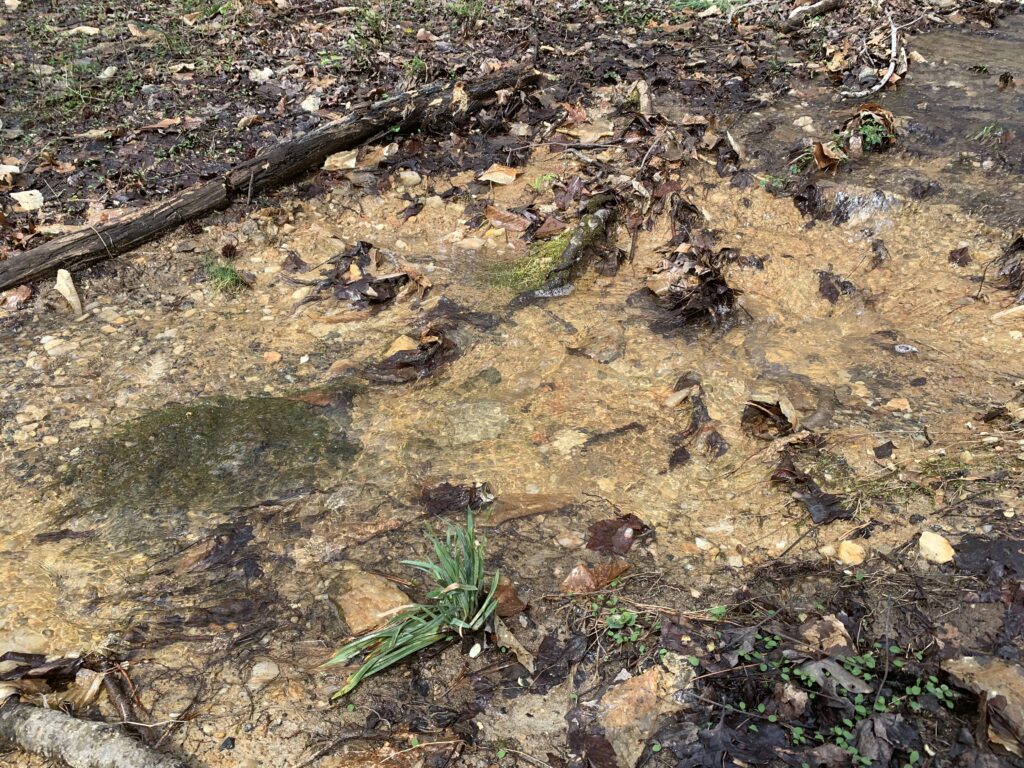
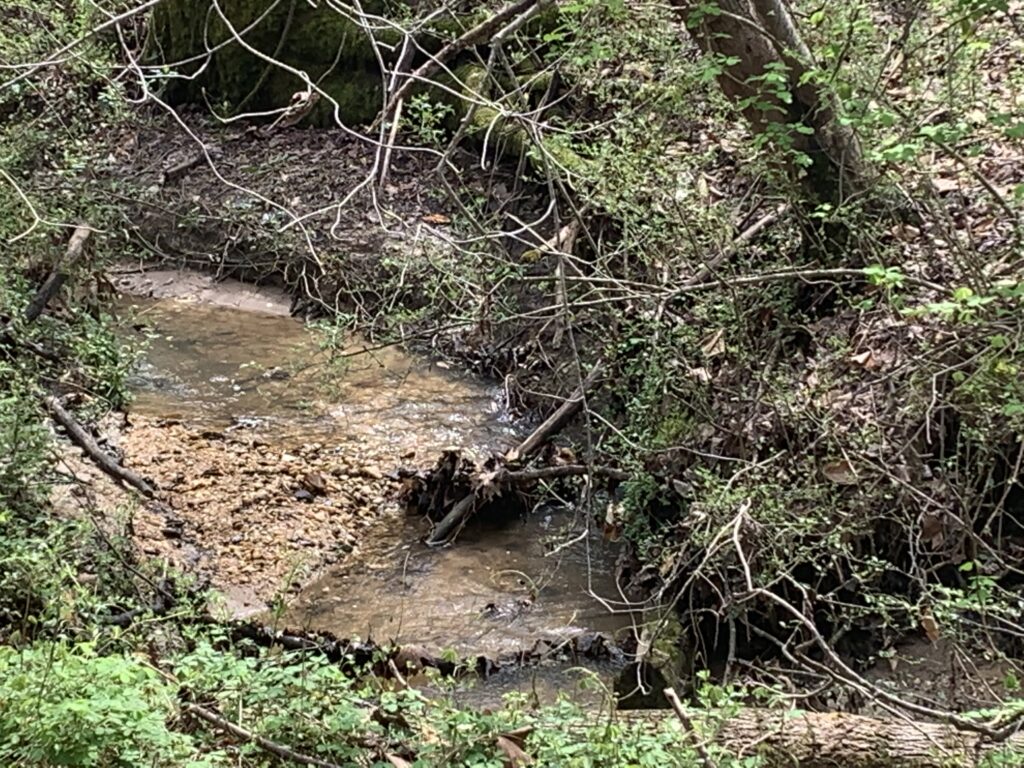
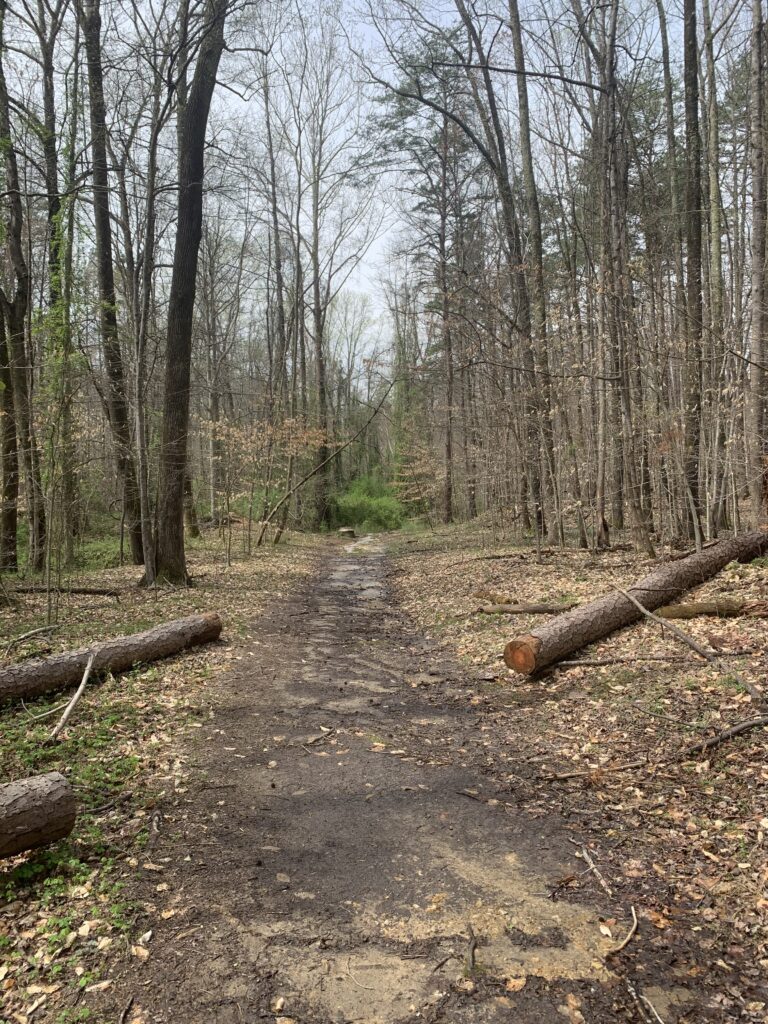
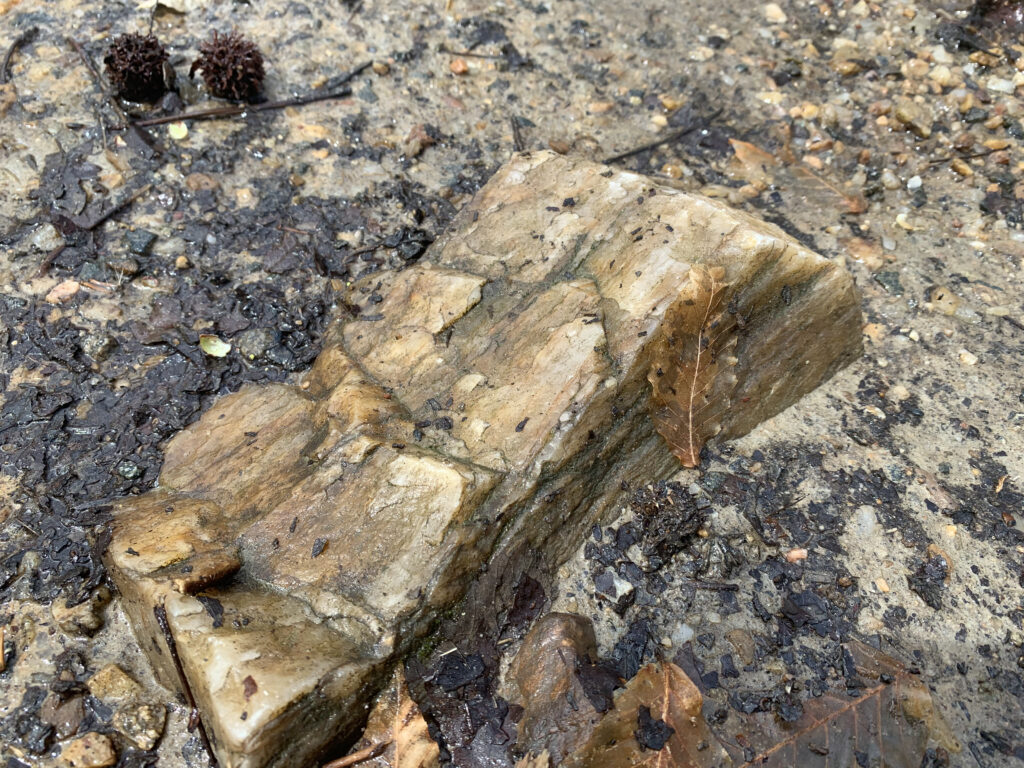
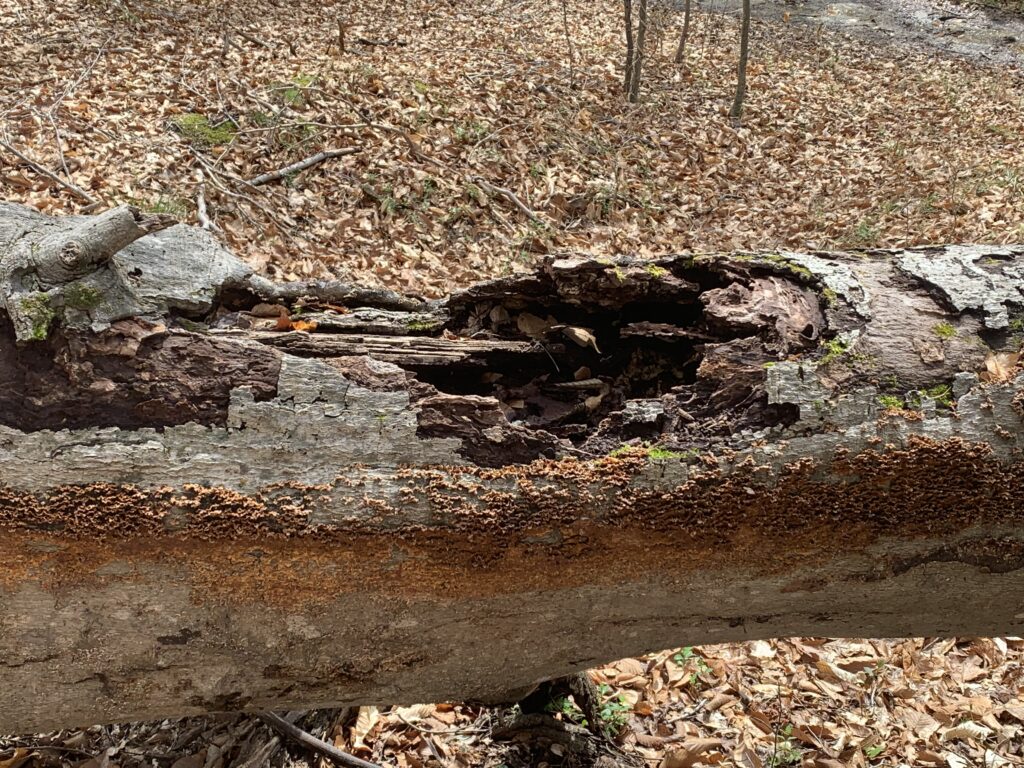
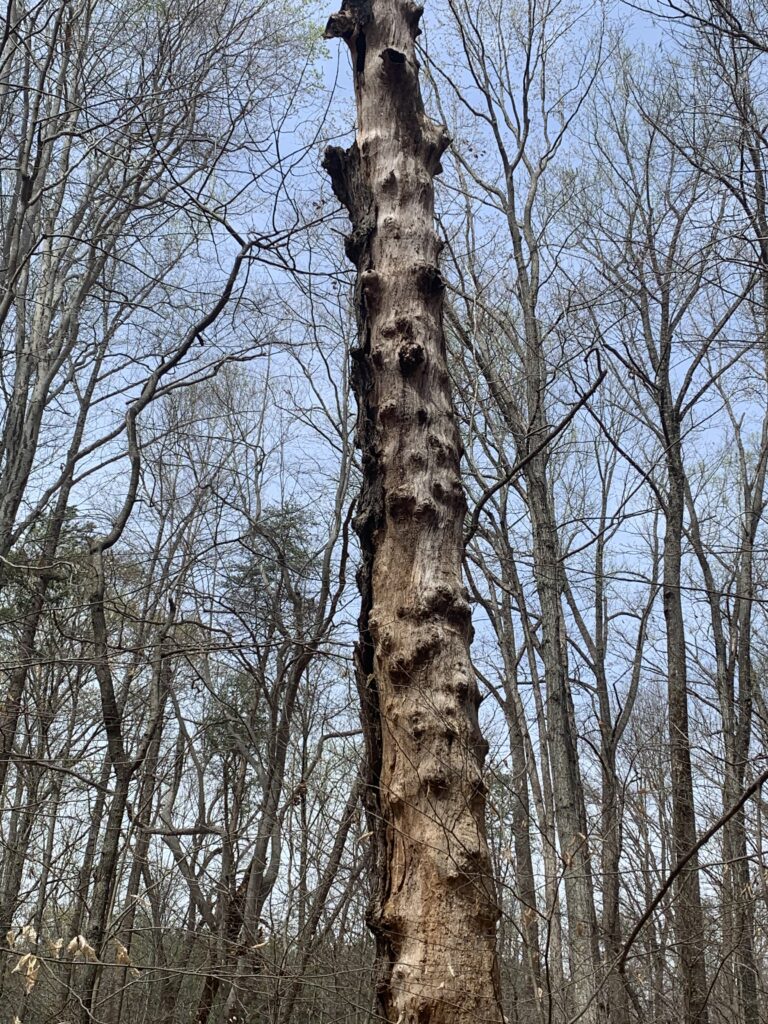

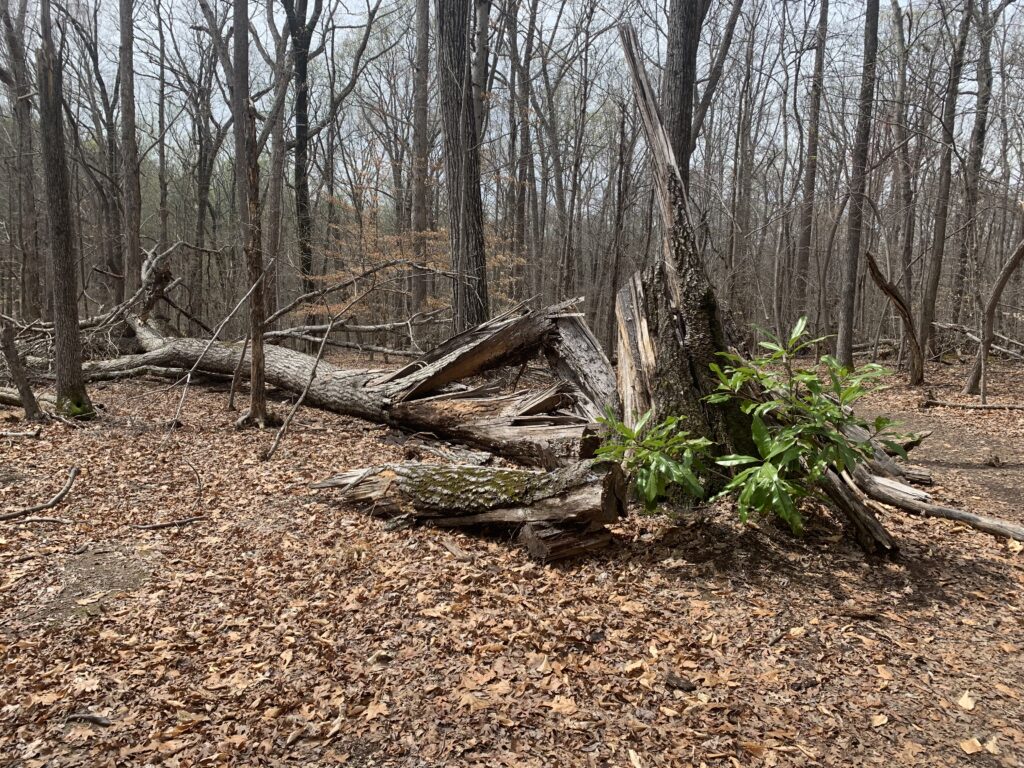
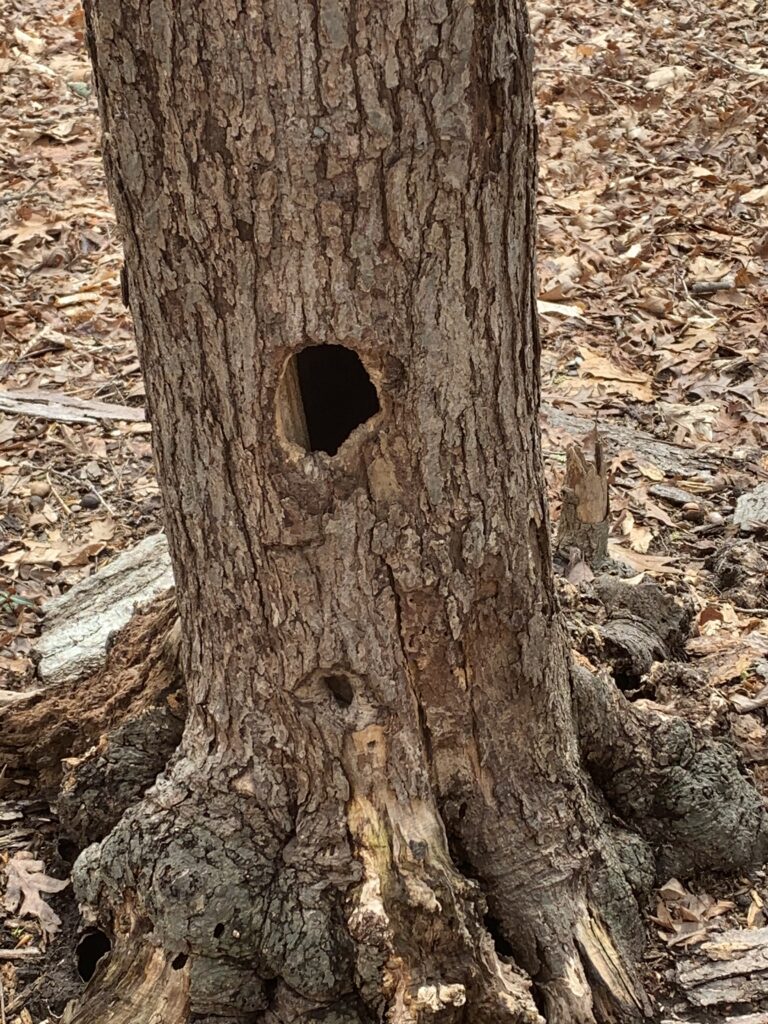
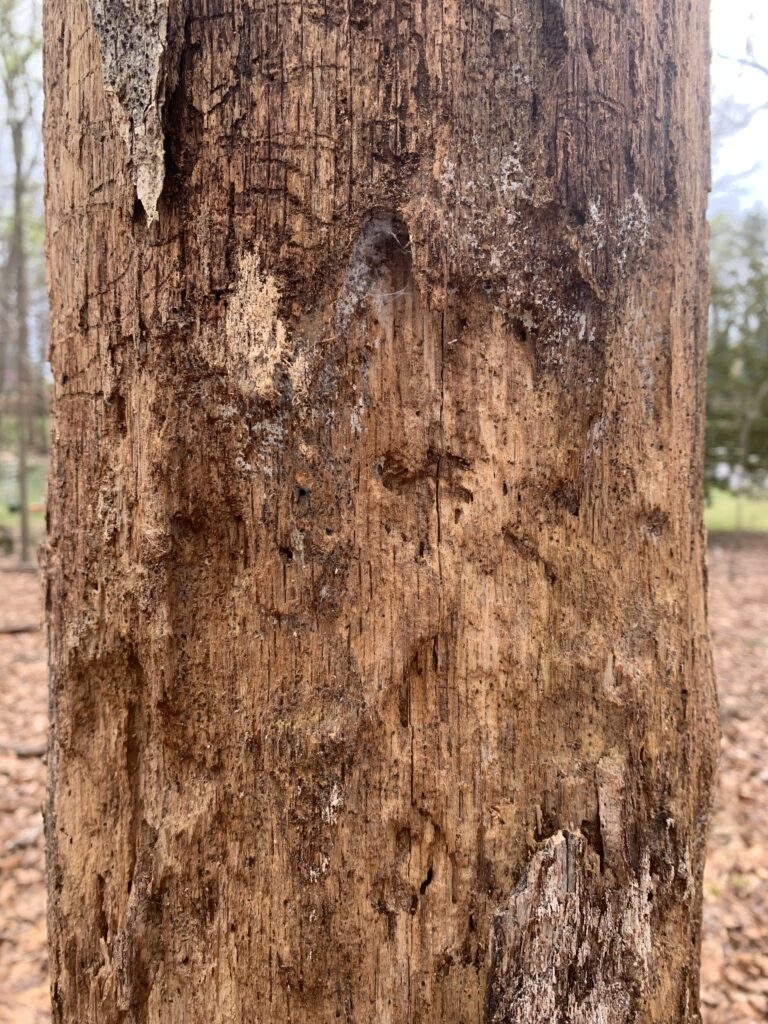
Campsite in the woods
Driving north on the two lane highway, running 45 mph, I down shifted the truck, put my blinker on while lowering the drivers window, and stuck my arm out signaling a left turn. I looked with trepidation into my rear view mirror and saw the nose of the Honda on my butt dip below my tailgate, the eyes of the young man driving got wide and came closer to the windshield. I hate a tailgater, I was running the speed limit too. I saw him consider passing me, dipping left just a bit, but there were cars speeding towards us in the oncoming lane. “That is why I’m stopping, you doofass, cars are coming.” I muttered. Forced to come to a complete stop due to oncoming traffic, the line of cars behind me began to stack up. When I had a chance, I punched it, darting behind a quick car and before a school bus rumbled by, timing it so the bus driver did not have to brake.
Safely off the two lane and on the muddy farm road I pulled to a complete stop right before the first real mud puddle. I got out and Coker jumped out right on my heels. I looked at the milk chocolate mud puddle and decided I did not want the goo on my wheels and figured I would just walk the rest of the way. I looked across the open space of the wheat field, now just sprouting, and noticed what a lovely spring day it was turning out to be.
Coker stuck his nose in the puddle and took a drink. “Quit Coke, damn.” He looked at me with a chocolate mustache and drank a little more, then trotted off smelling a clump of grass before taking a quick pee on it. He is a Parson Russell Terrier mix, basically a huge Jack Russell. He loves to ride in the truck and walk most any terrain with me. He was nose to the ground smelling for field mice I am sure.
I walked around the mud puddle knowing it was a deep one. I remembered the tadpoles that had hatched out last year, mono-limbed like sperm and looking for purchase. One day I asked my cousin why he wouldn’t fix this old problem of the puddle with his tractor. It wouldn’t take an hour. He said it cuts down on those that should not be over here, and the speed of those that should. Speed I thought. He was on to something there.
Coker was well ahead of me now. I walked slowly, heading aimlessly across the wheat field, leaving the black top well behind. The Honda long gone now replaced by more traffic speeding unimpeded. Where are they all going? I thought. Away from here, that is clear. I lumbered along the muddy roadside, more of a path to the back of the field. I was heading towards the tree line where the campsite was.
I noticed a red shouldered hawk watching me from a high branch of a yellow pine near the edge of the field. Both eyes forward, piercing the light between us. He was sizing me up maybe, watching to see if I might make a field mouse run. Or it could be he was judging Cokers weight, deciding if he was worth it. As I looked at him, and continued walking towards him, he collapsed from the limb and with out urgency moved south, down the edge of the old grass runway until he flared and came to rest on a limb of a White Oak. I love a bird of prey.
Coke and I kept walking, heading towards the woods. If we are always going somewhere, we will never get there will we? Nor will we value where we are. I thought of the young man in the Honda. If heaven is elsewhere then this place is no matter.
The small muddy farm trail had petered out at the tree line. The path to the campsite lay ahead.
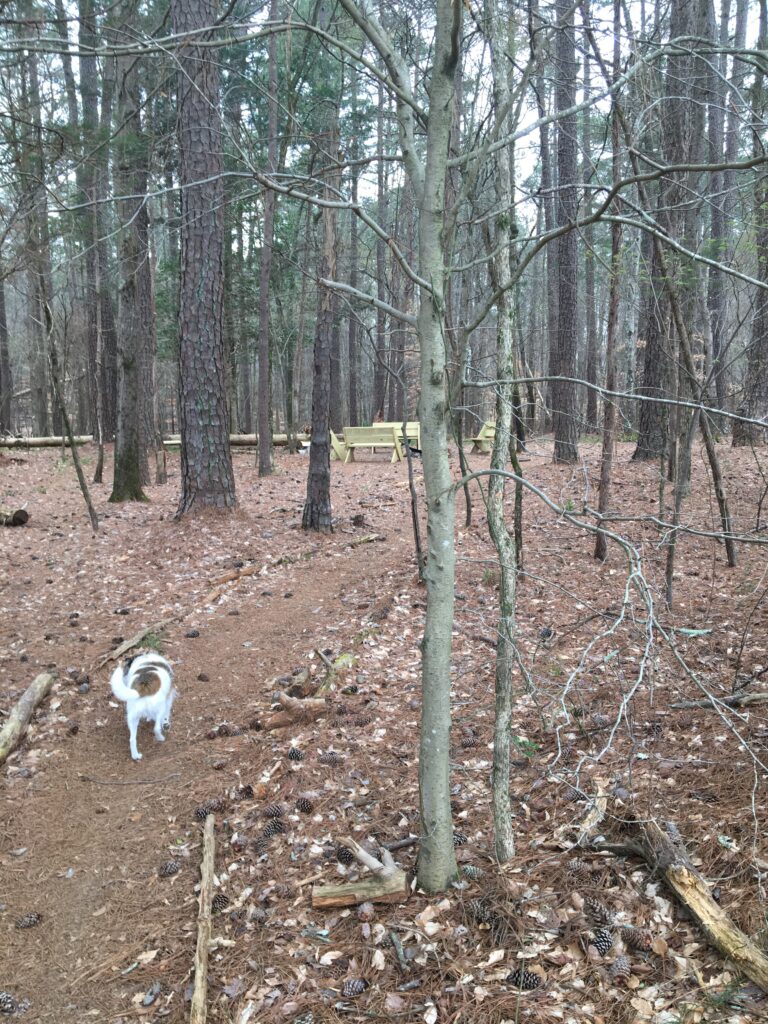
Personal Reflection on Cooleemee
I may not have any pictures to show the fun that I a have experienced with my friends but I want to share my overall feelings about the bullhole altogether.
There’s so much a person can say about the place that they have chosen. I just want to talk about what this place has done for me for all the times that I have found myself in the car heading this way. This place has provided be with a sense of peace and calmness that has guided a lot of the decisions that I have made in the past. I’ve had needed talks with myself regarding major life decisions and after major life events that have shaped my life to the way it is now.
Everytime I get the chance to meet somebody new I ask if they want to go with me (before covid of course) for the fact that this place has done a lot for me and could potentially do the exact same thing for somebody else who needs a place to listen to the waterfall or take a walk through one of the trails or even bring their friends who have never been so that they can share the experience as well.
I truly don’t know how long these are supposed to be but if you are ever riding to Charlotte and you’re passing the Yadkin River reroute the gps for a quick second and go to the bullhole I promise you won’t be disappointed maybe it can help you with a problem like it did for me.
A little history about Cooleemee
I’m not going to lie I had to look up most of this information because whenever I went to Cooleemee I never went to know the history behind the town itself just went to enjoy the bullhole with my my friends.
So to start out Cooleemee used to be a mill town (cotton mill to be exact) which had about 254 families living in it around the year 2000 In Davie County on the banks of the Yadkin River.
See back then Cooleemee had a lot of the mill workers walk away from the job forcing the higher ups to force major time management for the workers that actually stayed showing them how to work a machine in a short period of time.
To fast forward in the year 2003 the bullhole not having as much history as Cooleemee itself it was a gathering spot and in my opinion it is to represent how the people of Cooleemee stuck together through their rough time and got through it.
Asheville Mountains
Bugs, snakes, and other pests
It is more than likely that you will run into your fair share of unusual and possibly dangerous critters and crawlers. From snakes to pestering mosquitoes, you’ll be swatting away and jumping from many different bugs and insects so its important that you keep an eye on them while you travel through Asheville’s gorgeous mountain scape. Its a beautiful place indeed, but it is nature, and other living beings live here, this is there home and you’ve stepped right in the middle of it. Make sure to keep this in mind, because the trees and dirt you march through, is their habitat.
In most wooded areas of the forest you will end up encountering mosquitoes. Red bumps will appear on your body and you probably wont really even know how or why. Make sure to bring your ointments and creams along with you on long hikes, as well as long socks that you can use to protect yourself. You’ll also come across grasshoppers, who wont harm you, but will certainly pose stiff for a picture if they feel shocked or threatened. They’re fast though, so if you arent careful they’ll hop away qucikly.
Another annoying pest you’ll find are ticks. I’ve unfortunately met the wrath of these small bugs when I was younger and about 3 of them decided to latch on to my back. I was wearing a very thin shirt while sifting through some bushes and ended up finding them latched on to me in the shower. The forest is littered with these little parasites so keep an eye out.
Snakes are a great fear of many mountain travelers, and indeed the serpents do line the dirt in the most secret and invisible of places. However, not all snakes are as deadly or venomous. Garden snakes are non-venomous and much less dangerous than most snakes. You’ll see plenty of them along your hikes and there is no need to crush or hurt them as they will not bother you. Usually the best thing to do is to spot the stripes lined on the snake. If the pattern is unrecognizable then its better to steer clear. The same applies to multi-colored or bright colored frogs which are most often venomous and not to be messed with.
Arachnophobes beware, spiders are no stranger to the tall oak and spruce trees that line to forest, and will spin their webs from branch to branch. The best option in many cases is to stay away from the underside of trees as you might run into and get caught in the webs. Make sure to shake yourself off well if you find yourself in this situation.
There many crawling bugs and slithering reptiles out there in the wild, so make sure you keep an eye out for them to make sure you and your fellow travelers are safe.
